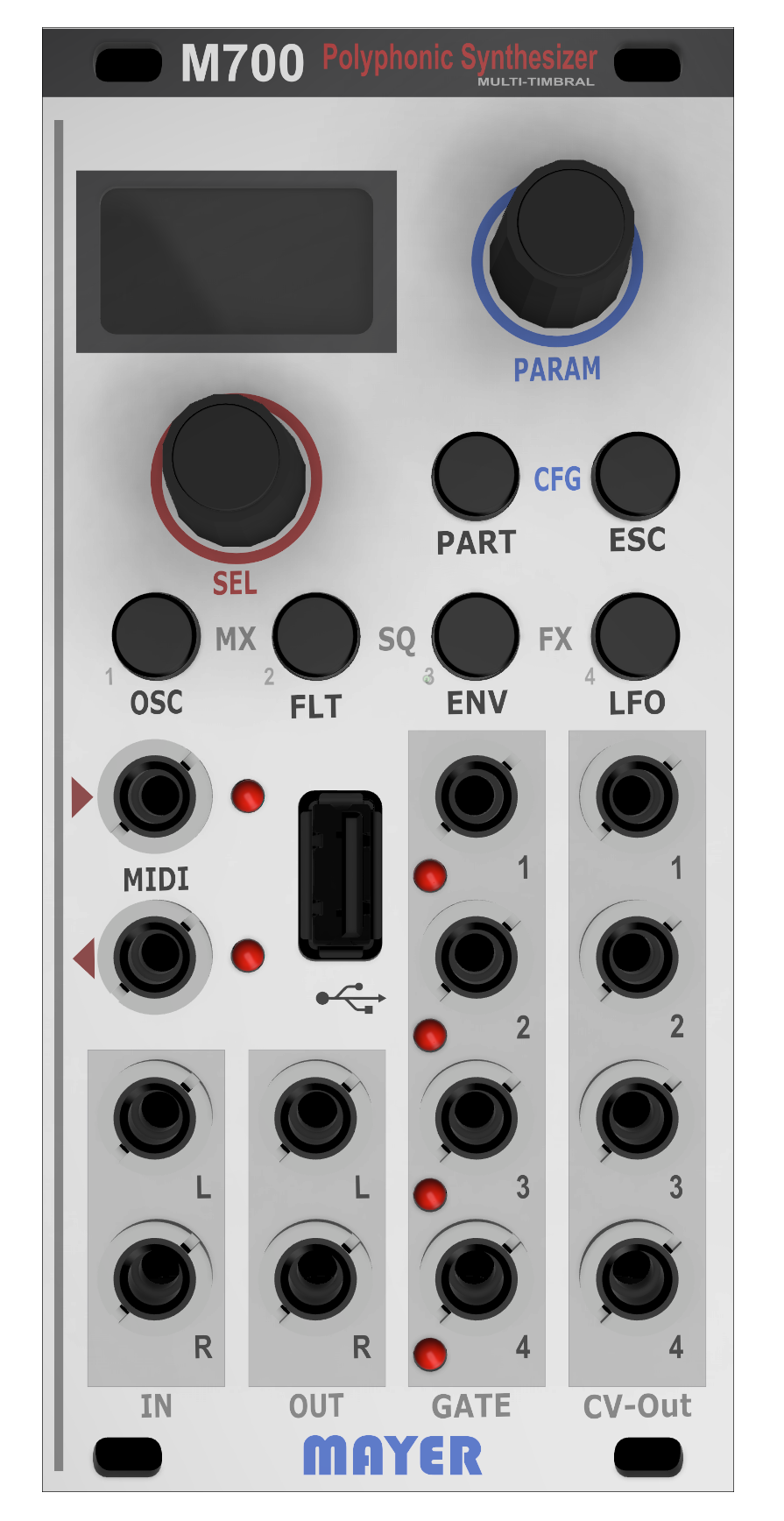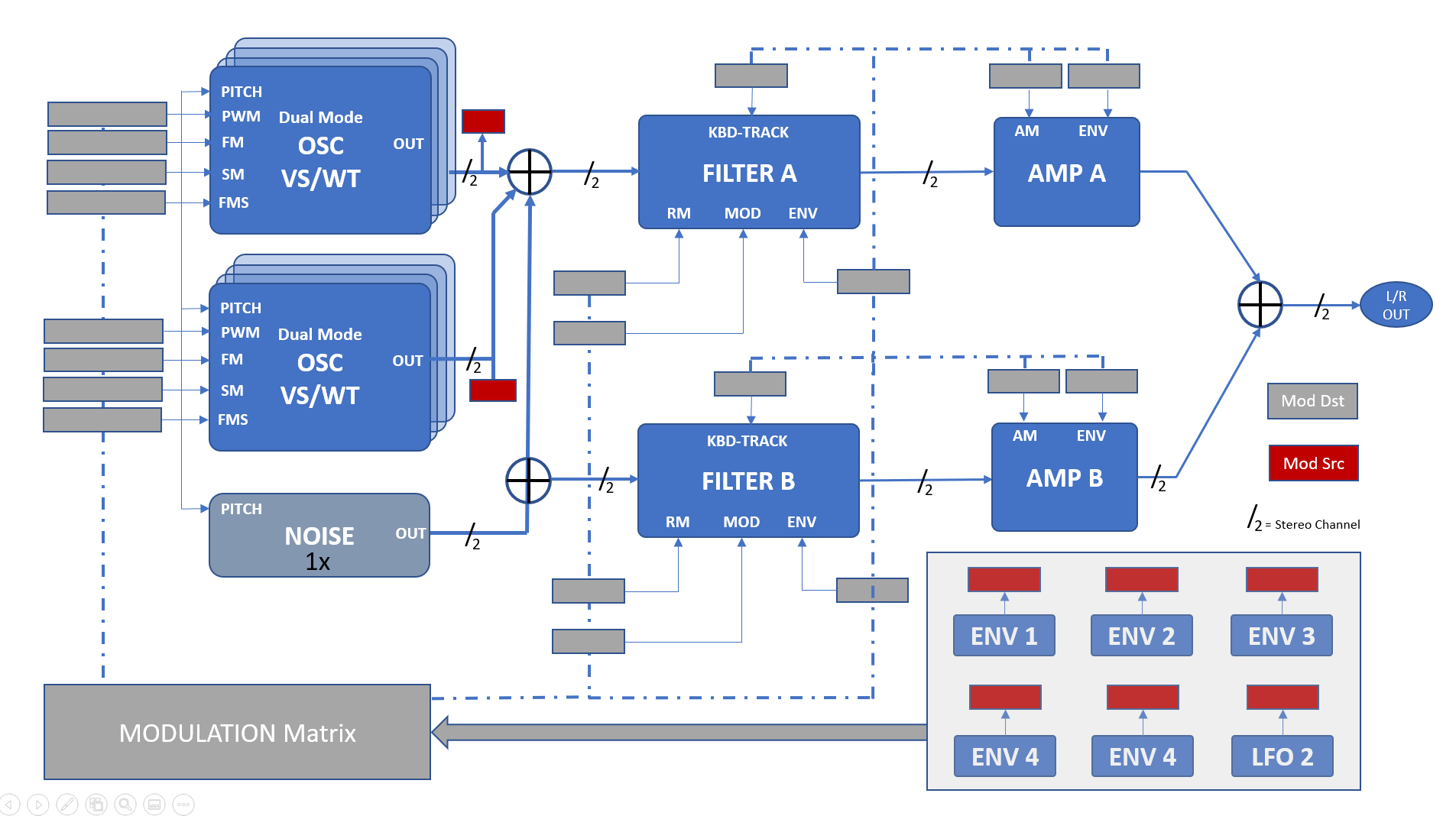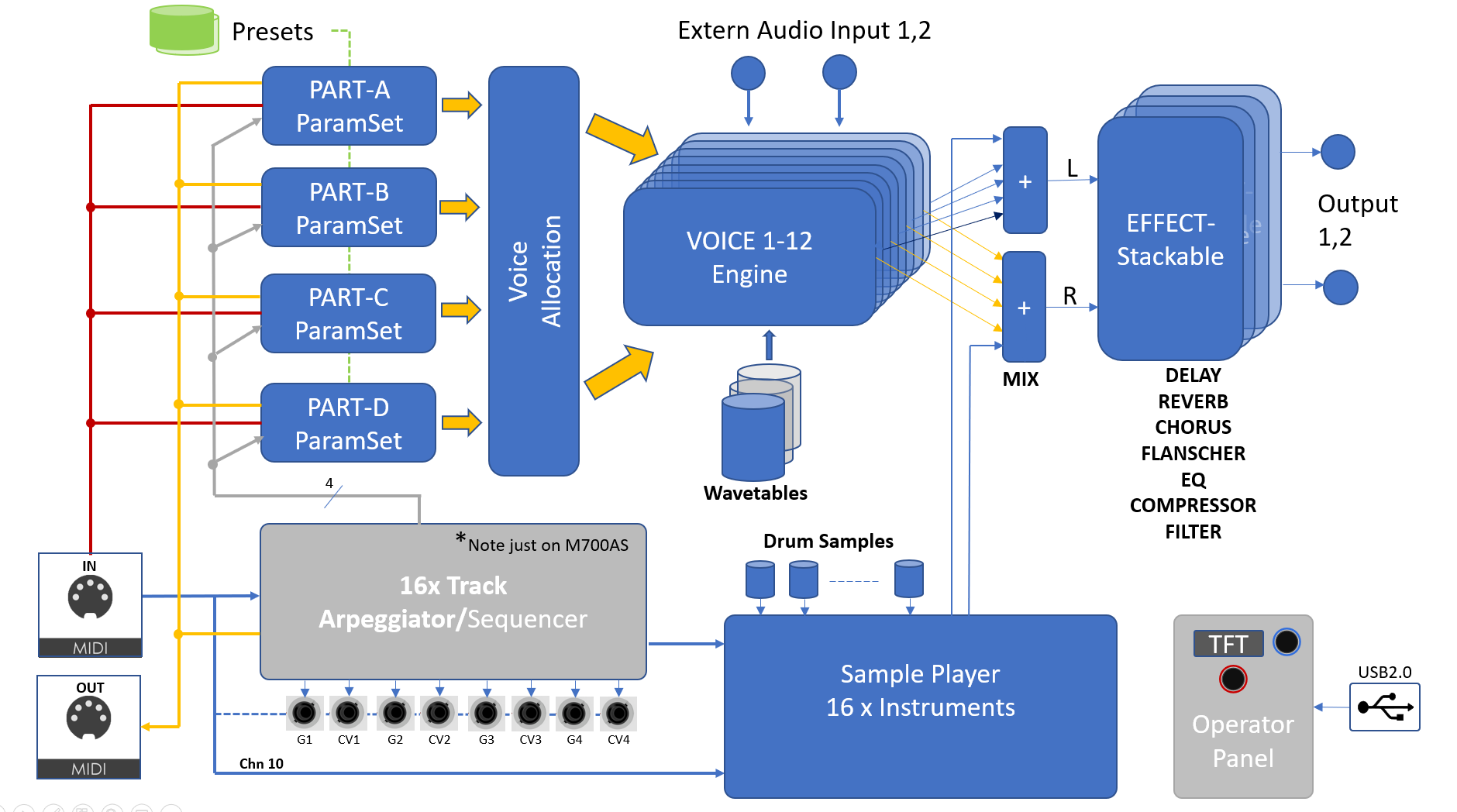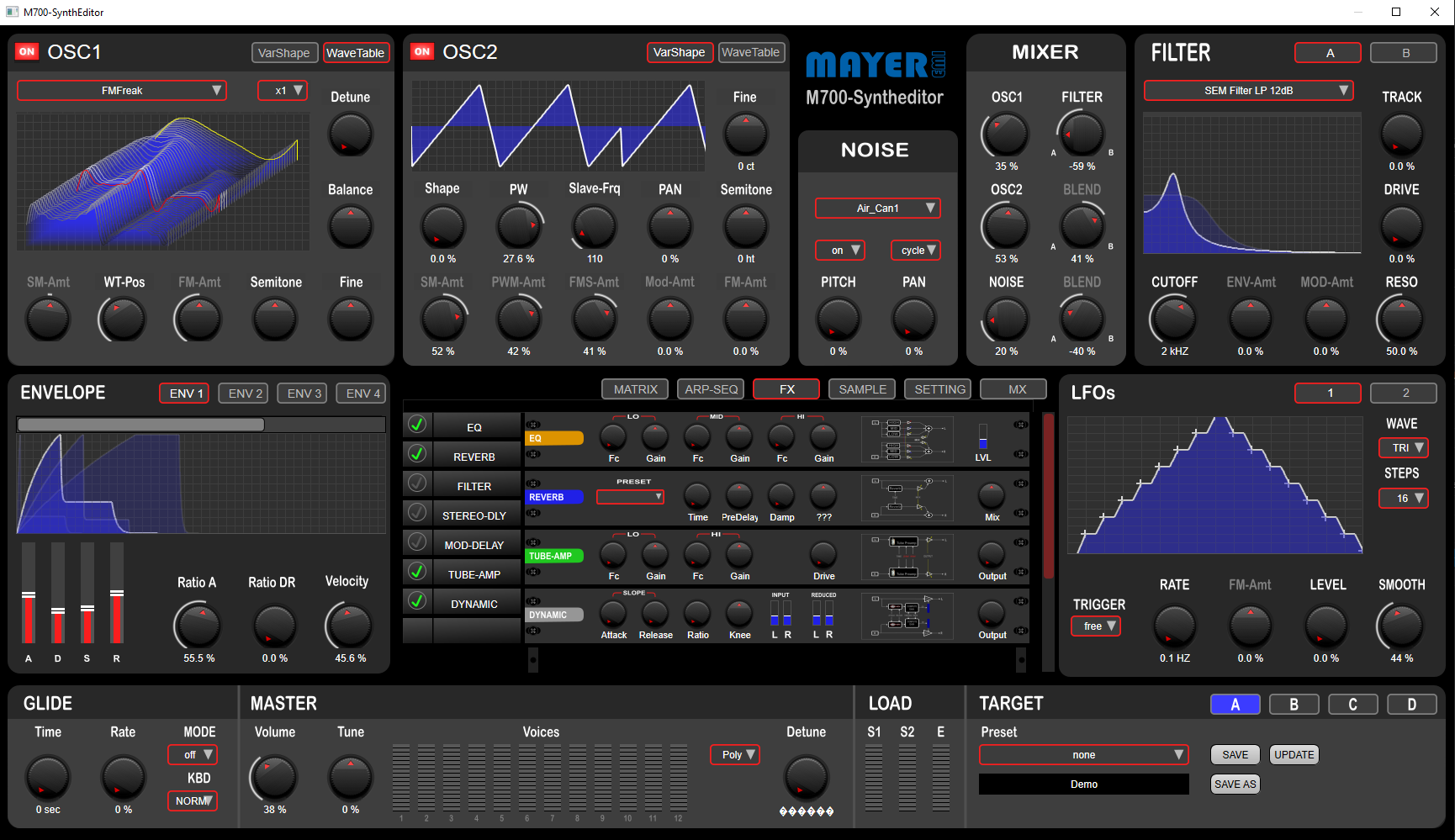M700 -Virtual Analog [VA] multitimbral polyphonic synthesizer in the Eurorack format.
Multitimbral with four parts each with a stackable effect section.
A Sample Player for transient sound sources (.wav).
Whats the difference to the M800
- The M700 has a full stereo audio path starting from the OSCILLATORS through the stereo filters (both A & B), through the stereo AMP (both A & B as well) and to the effect stack (every kind of effect is stereo). See picture [Voice Structure]
- The M700 connects with 4x CV & 4 x Gate to other eurorack modules. (this may be used as Midi to CV conversion or from the built in Arpeggiator/Sequencer (only Model M700AS))
- Based on a powerfull Raspberry CM3+ (Quad-Core Cortex A53 1.2Ghz) industrial module, small size 12HP (66,62mm)
- Yes is headless (no 5" TFT) but an extensive Syntheditor V1 (PC Windows 10, MAC in preparation) connected over Ethernet (galvanic isolation) Operator panel (0,96" TFT) for changing parameters as well as midi learn and for sure the selection of presets for all parts (Timbre A,B,C,D)
- Ready for connecting control modules such as the M701 Voice Control Module
Hardware

Dimmension
Width: 12HP (62.26mm), Height: 3HU, Depth: 42mm
Power Consumtion
+-/ 12V/18mA +5V/0.5-0.8A depends on the operating condition
CV-Output
4x [1V/Oct] outputs 0-8V
Gate-Output
4 x Gate signals 0-5V
Audio In/Out
2x2 Channels maximal +-/8 V, audiorate 44100 smp/sec 24 bit (wolfson codec)
MIDI In/Out
1x Midi Input Output Port (16 Midi Channels)
USB 2.0
Hot connect for USB/Ethernet, USB-Midi
Connectors
Eurorack compatible 16 pin Header power connector, 6pin Header expansion bus connector (e.g M701)
Firmware OS
The sound engine of the M700 runs on top of a Linux OS with real time extensions. It is written in c++. The overall boot time is ~30 sec.
All contents like wavetable-, sample-files, preset and sub-preset files are stored on the internal filesystem.
They are accessible over the ethernet (e.g M700Syntheditor or SSH based tools).
Updates of the sound engine are also possible via ethernet (in the future remote via internet).
Voice Structure

REMARKS:
The OSC Block consists of two alternate modes:
- VS means variable shape. This mode allows to generate classic waveforms like Saw, Tri, Pulse with the capability to morph seamless between those three waveforms
- WT means wavetable. This OSC mode allows to morph through 256 table positions (Table wide 2048 samples x 256 different tables)
The OSC may run up to 4 instances with a detune amount between every instance the output will spread on the OSC stereo output.
In sum 4x OSC1 + 4x OSC2 per voice.
We have two stereo FILTER A&B in the voice structure and each of them ends in AMP A&B. Both can be modulated from different sources.
The NOISE is a sample based oscillator which can be loaded with samples of noise and ambient. This oscillator can track the pitch
(Mode: Onshot, Cycle, looped).
Modulation Matrix: Has 18 sources and 22 destinations in 16 Slots. The matrix allows multiple sources to one destination (auto sum).
SynthEngine Structure

*Note: The build in arpeggiator sequenzer is not supported in the available M700 module version. The M700AS (in development) will support this great feature.
M700SynthEditor:
The SynthEditor itself does not produce any sound, it is just a remote control for the synth engine in the M700 synth module.
With the overview on a PC screen of all major functions, you get a quick and good understanding about what is going on.
The parameters are stored on the M700 device filesystem. The presets can be uploaded to the PC on demand.
The actual version (V1.1A) is running on Windows 10 (64bit).


